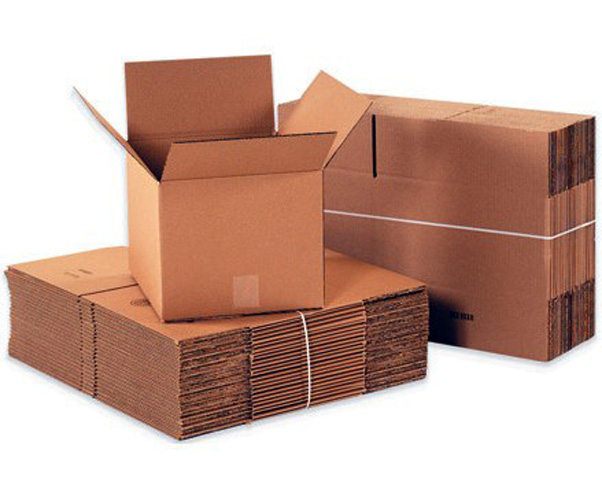Four Trends Driving Corrugated Packaging Growth
![]() Print this Article | Send to Colleague
Print this Article | Send to Colleague
Smithers Pira, Surrey, U.K., published their most recent report detailing how the corrugated segment of the packaging industry is growing rapidly. Demand for corrugated packaging material is expected to increase by an average of more than 4% annually over the next five years, and will amount to almost 115 million metric tons of converted material worth an estimated $176 billion by 2019. That’s according to the new report from Smithers Pira examining four trends in the corrugated packaging sector.

Environmental Issues. The development of innovative designs and reductions in paper grammages are being driven by increasingly demanding environmental and sustainability requirements. Producers are making significant investments in environmental protection and energy optimization programs, such as the high-pressure boilers installed by Andritz at the Mondi Group’s Swiece, Poland, Ruzomberok, Slovakia, and Frantschah, Austria, plants, in addition to other activities aimed at reducing water consumption and improving logistics and transportation.
Contrary to public perception, it is probably true to say that most environmental and sustainability investments and initiatives are driven by the need to improve efficiencies and reduce costs, with the resulting good PR simply being a positive spin-off for the marketing team.
Lightweighting vs. Heavyweighting. Average substance weights continue to show reductions as producers look to improve yields as far as possible. This is driven by the need to reduce overall packaging weight and reduce transport costs. Much of the new capacity being brought into the market is focused on lightweight containerboards of 70-160 gsm, especially in the new Chinese machines.
The majority of lightweight boards are being used in Western Europe, where finished board weights have been reduced by an average of 5 gsm from 2009 to 2012, according to data from FEFCO, the European Corrugated Packaging Association. An increase in demand for heavyweight boards has seen the average for Eastern Europe increase by 3 gsm over the same period.
On the other hand, the industry has seen the introduction of certain new heavyweight products, such as Billerud Flute semi-chemical fluting. Primarily targeted at replacing wooden packaging, this product is also able to replace double-walled board with an overall lighter-weight, single-wall substitute. The use of a suitably strong corrugated product as a substitute for wooden packs brings about significant weight reduction, which improves logistics and handling, as well as providing a cushioning for sensitive heavy products, creating a more printable outer surface, and circumventing the regulations regarding pest and insect damage in wooden packs.
The heavy-duty sector is continuing to show growth, particularly in the chemical and automotive industries, as a result of growing demand as well as the "greener" image of corrugated compared with other materials. As a result of this distinction between light and heavyweighting, these expressions are now being replaced with the expression "rightweighting."
Internet Shopping. Internet shopping as a trend continues to expand rapidly, and is fueled by the increasing use of smartphones and tech-savvy customers. This represents an opportunity for brand owners to introduce two different packaging types: one geared to traditional store display, featuring high-quality graphics, and one designed for Internet sale. This is, in essence, nothing more than a brown shipping container. This has a positive effect on packaging demand, as an individual item now consumes an amount of corrugated material in its own secondary distribution pack.
Amazon has been prolific in this category, and the growth in demand for this type of pack has seen the introduction of specialized systems such as Rengo’s new Gemini packaging system, which is aimed at improving efficiencies in the Internet fulfillment market. This equipment works by automatically measuring product size and adjusting the pack size accordingly, with only corrugated board and shrink film required. Significant improvements in transport efficiency are achieved with the reduction of space in the final pack, and the use of shrink wrap obviates the need for additional cushioning materials.
Printing. The fact that Internet shopping is reducing the need for high-quality printed secondary packs is being offset by the growing demand for RRP (retail-ready packaging), point of sale (POS) displays, and merchandising units. These items are under pressure to provide the shelf appeal and brand exposure that brand owners are looking for.
Therefore, we have seen the introduction of new product lines in the containerboard market, such as Stora Enso’s MediaLiner, launched in 2012. These kinds of products provide enhanced graphic properties, allowing the reproduction of photorealistic images on RRP and POS applications in particular.
Additionally, the developments of new marketing techniques by tech-savvy brand owners tend to incorporate smartphone apps and QR codes. This provides an opportunity for corrugated converters to work with digital print specialists to develop the necessary technologies to meet the demands of this new type of interactive marketing.


